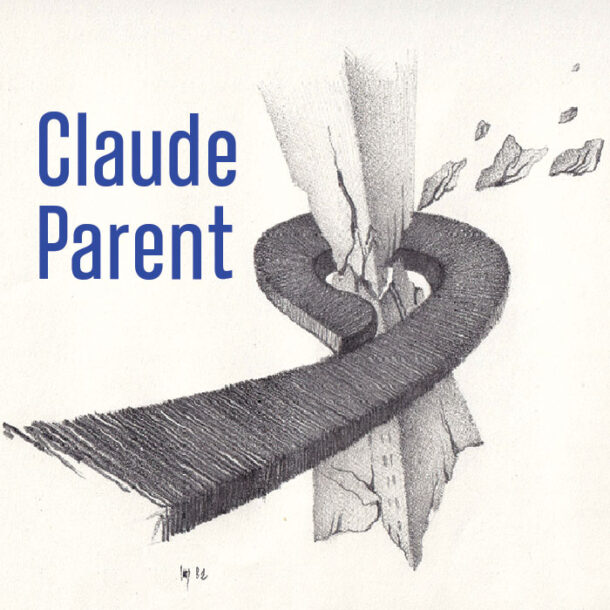
The Claude Parent Archives and The Front are pleased to announce the opening of Claude Parent – Architectural Fictions on October 14, 2023 from 6-9pm, at The Front, 2207 N. Broadway in Los Angeles. This will also be a rare opportunity for collectors and architects to view and acquire Claude Parent’s visionary drawings before they are returned to the archive in Paris in November of this year.
This new exhibition of acclaimed French architect’s drawings focuses on the significance of drawing as means to communicate an idea. The original graphite works on paper from the Claude Parent Archives in Paris on exhibit at The Front, most of them never seen in Los Angeles, do not represent actual proposals for buildings, but rather offer speculations on the possibility of the Oblique Function at various scales and applications, what Parent called architectural fictions. The work shown will also include study and preparatory sketches.
Parent was constantly drawing to experiment with and communicate the Oblique Function at multiple scales and applications. Parent never stopped drawing, producing hundreds of carefully constructed graphite and ink compositions in which he continued to explore and apply the theories of the Oblique Function to cities, territories, and interiors demonstrating the effect of his ramped architecture on the body. In 2010, Frédéric Migayrou and Francis Rambert curated a major retrospective of Parent’s built and drawn work at the Cité de l’Architecture et du Patrimoine’s inaugural exhibition, introducing the work to a younger generation of architects working primarily with digital drawing techniques.
Architect and theoretician Claude Parent (1923-2016) was the first in France to make a sharp break with modernism beginning in the 1950s. Through books, manifesto-drawings, and built projects, his work has enabled new conceptualizations and understandings of space. Parent’s manifesto, the Oblique Function theory developed with Paul Virilio in 1963, dictated that buildings should use slopes and reject orthogonality. His architecture, that dislocated established architectural elements a full generation prior to deconstructivism, used ramps and tilted planes in the buildings’ circulation plan, restored an active role to the building’s inhabitants and transformed the cellular plans of conventional buildings into an open, interpretive social space. One of the most pivotal and radical architects of the twentieth century, his work influenced leading architects such as Zaha Hadid, Frank Gehry, Rem Koolhaas, Jean Nouvel who called Parent “the Piranesi of our times”, Daniel Libeskind, Thom Mayne, who consider him a precursor.

